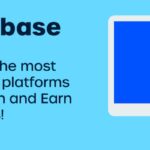Learning to read piano music might seem daunting at first, but the rewards far outweigh the effort. Like learning any new language, it opens up a world of possibilities and allows you to fully express yourself musically. While you can certainly play by ear, reading music offers significant advantages that can accelerate your progress and deepen your understanding of music.
Why Learn to Read Piano Music?
Mastering music notation offers several key benefits:
Faster Learning and Playing
While learning to read music requires dedication, it doesn’t take as long as you might think. With a systematic approach, you’ll be surprised how quickly you can grasp the fundamentals and start playing simple pieces. Understanding notation allows you to learn new pieces more efficiently than relying solely on listening and memorization.
Sight-Reading Proficiency
Sight-reading, the ability to play a piece of music you’ve never seen before, is a valuable skill that unlocks a vast repertoire. Imagine being able to pick up any sheet music and play it! This skill comes with practice and a solid foundation in music reading.
Eliminating Guesswork
Developing a good ear is important, but even experienced musicians can struggle to identify complex harmonies or rapid note sequences by ear alone. Reading music provides clarity and eliminates the guesswork involved in learning a new piece. You’ll know exactly which notes to play and how they should sound.
Preserving Musical Knowledge
Remembering everything you learn by ear can be challenging. Written music serves as a permanent record of your musical journey, allowing you to revisit and refresh your knowledge of previously learned pieces. It’s like having a musical library at your fingertips.
Unleashing Creativity
Understanding the rules of music theory, as conveyed through notation, is essential for breaking them creatively. Many great composers and improvisers built their skills on a strong foundation of music reading. It allows you to analyze and interpret music in new and exciting ways.
Beyond Traditional Notation: Chord Charts
While traditional staff notation is essential for classical piano, other genres like pop and jazz often utilize chord charts. These charts provide a simplified representation of the harmony, indicating the chord progressions and sometimes rhythmic patterns.
Chord Charts vs. Staff Notation
Chord charts are useful for comping and improvisation in ensemble settings, but they don’t provide the same level of detail as staff notation. Learning both systems offers the greatest flexibility and opens doors to various musical styles.
Lead Sheets: Bridging the Gap
Lead sheets combine elements of both notation systems, providing the melody and lyrics in staff notation along with chord symbols for accompaniment. This format is common in popular music and provides a valuable tool for singers and instrumentalists.
Conclusion
Learning to read piano music is an investment that pays off in countless ways. It empowers you to learn faster, play a wider range of music, and deepen your understanding of musical concepts. While chord charts offer a valuable alternative for certain genres, a solid foundation in staff notation remains essential for any aspiring pianist. So, embrace the journey of learning to read music and unlock the full potential of your musical talents!
